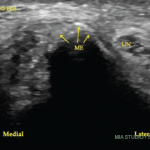The combined fasinumab group had a higher incidence of paresthesias compared with the placebo group (3% vs. 0%). Of the 12 paresthesia events, 10 were mild and two were moderate; none were severe. No incidents of sympathetic nervous system dysfunction were found.
“Paresthesia is something that’s recognized as a consequence of nerve growth factor inhibition,” says Dr. Kivitz. “Most, but not all, are reversible, and most are mild to moderate.”
Overall, few participants discontinued fasinumab due to the side effect profile. “The results were interesting in that we did not see an expected dose response for the efficacy, but we did see an increase in adverse events of concern as the dose increased,” says Dr. Kivitz. “This [finding] suggests we need to concentrate our efforts on the lowest doses for this and other nerve growth factor inhibitors.”
Ongoing Fasinumab Trials & Other Nerve Growth Factor Inhibitor Studies
Dr. Kivitz suggests future studies will likely focus on these lower doses. More phase 3 trials are underway that may potentially open a path to regulatory approval. Current trials include long-term studies on safety and efficacy, studies directly comparing fasinumab with naproxen, diclofenac and celecoxib, and a study examining measures of peripheral nerve function.5-7
Dr. Kivitz explains that it will also be important to find out more about how long these agents can safely be used clinically. “Right now, all of the trials are limited exposures, so they aren’t being used long-term for disease processes that are long term. That is still going to be something that will not have a clear answer in the near future, but we will eventually need to know.”
The question of potential monitoring is also one that will need to be addressed. Dr. Kivitz says manufacturers are currently grappling with the best way to monitor for potential side effects and if some sort of repeated imaging may be needed for patients who take nerve growth factor inhibitors.
Another anti-nerve growth factor antibody, tanezumab, is under development by Eli Lilly and Pfizer. In March, the U.S. Food & Drug Administration accepted a Biologics License Application for tanezumab for review, with a goal to decide on the application by December 2020.8 Thus, it is further along in the regulatory approval process than fasinumab. Dr. Kivitz notes that all treatments in the class face similar challenges in terms of the side effects of nerve growth factor inhibition.
If approved, nerve growth factor inhibitors would not be first-line therapy, Dr. Kivitz points out. “Because of such a dire need for help in our patients with OA pain, the limitations we have with our current interventions, I think there is a great need for treatments with new modes of action,” he says. “I think nerve growth factor inhibitors could fill that role, as long as we carefully balance safety and efficacy.”



